Gallerist Amber Creswell Bell – Wooing a gallery and keeping it sweet
It's difficult to know when you've put your foot in it with a gallery, so the Michael Reid group's emerging artist expert can clarify some rules for you.
There are many similarities between artist-gallery relationships and the dating game. First, there’s flirting. You do a few shows to see if there is chemistry, and then “go steady”.
Finally, if you are the type to “put a ring on it”, you commit to mutual exclusivity and build a partnership.
However, just as marriage isn’t for everyone, neither is artist representation by a gallery. There’s plenty to be said for keeping it casual, so long as both parties feel satisfied and respected in the morning.
Amber Creswell Bell, director of emerging art for the Michael Reid group, explains the dynamics of a successful artist-gallery relationship – and the kinds of poor behaviours that lead to a painful break-up.
Amber has written six best-selling art books, directs the Michael Reid Emerging Art program, is curator of the Michael Reid Northern Beaches Gallery in Sydney and Southern Highlands Gallery, and co-founder of the National Emerging Art Prize.
Back to Basics: What is the point of a gallery?
Galleries should be able to take the work, prices and career beyond what an artist can do on their own. While some people are excellent self-marketers, their potential audiences and price growth are limited without a gallery, says Amber.
“You will hit a ceiling of what people will be prepared to pay for your work.
“So, you might be very good at selling your $2,000 paintings through Instagram or your website, but if your big goal is to grow your work and increase prices to $10,000 to $12,000, you need to have a gallery endorsing your work to collectors to make them feel comfortable spending that kind of money.
“It’s very unusual to sell a $12,000 painting straight from your own website. And I think only so many people will buy from you through Instagram. Whereas, a gallery is actively looking for new sectors.”
What is representation? Getting it right
Representation is not a casual relationship, nor is it having some of your paintings in a stockroom. It is an exclusive, contractual relationship between an artist and a gallery. The misuse of this term is misleading.
Amber says artists should consider whether representation is a suitable goal: “Representation is not the Holy Grail. And, just because it’s what other people want doesn’t mean it’s right for you.
“If you are very prolific and you’re happy with the quantity of work you’re making and selling without the interaction or involvement of a gallery, stick to it. There is nothing wrong with that. That’s very good. But if you want to work with a gallery, that is a different approach, and you need to play by some rules and etiquette.”
Four artists were picked at the Northern Beaches gallery as suitable for representation, with the expectation that their careers would develop through the Michael Reid network of five galleries. The end goal was representation with Michael Reid Sydney and its gallery in Berlin, Germany.
Landscape painter Julz Beresford started with Amber in the Northern Beaches in a casual artist-gallery relationship.
“She was amazing to work with and so professional. She took on board all advice and evolved her work. She got stronger and stronger with every show. She didn’t sell her work all over the place and decided to focus on relationships and hunker down to do her best work,” says Amber.
“As a result, her work has gotten bigger, her prices have surpassed $10,000, and she is now represented by Michael Reid Sydney, and Berlin. She worked right through the system to the end goal.
“I have three other artists on track to do the same.”
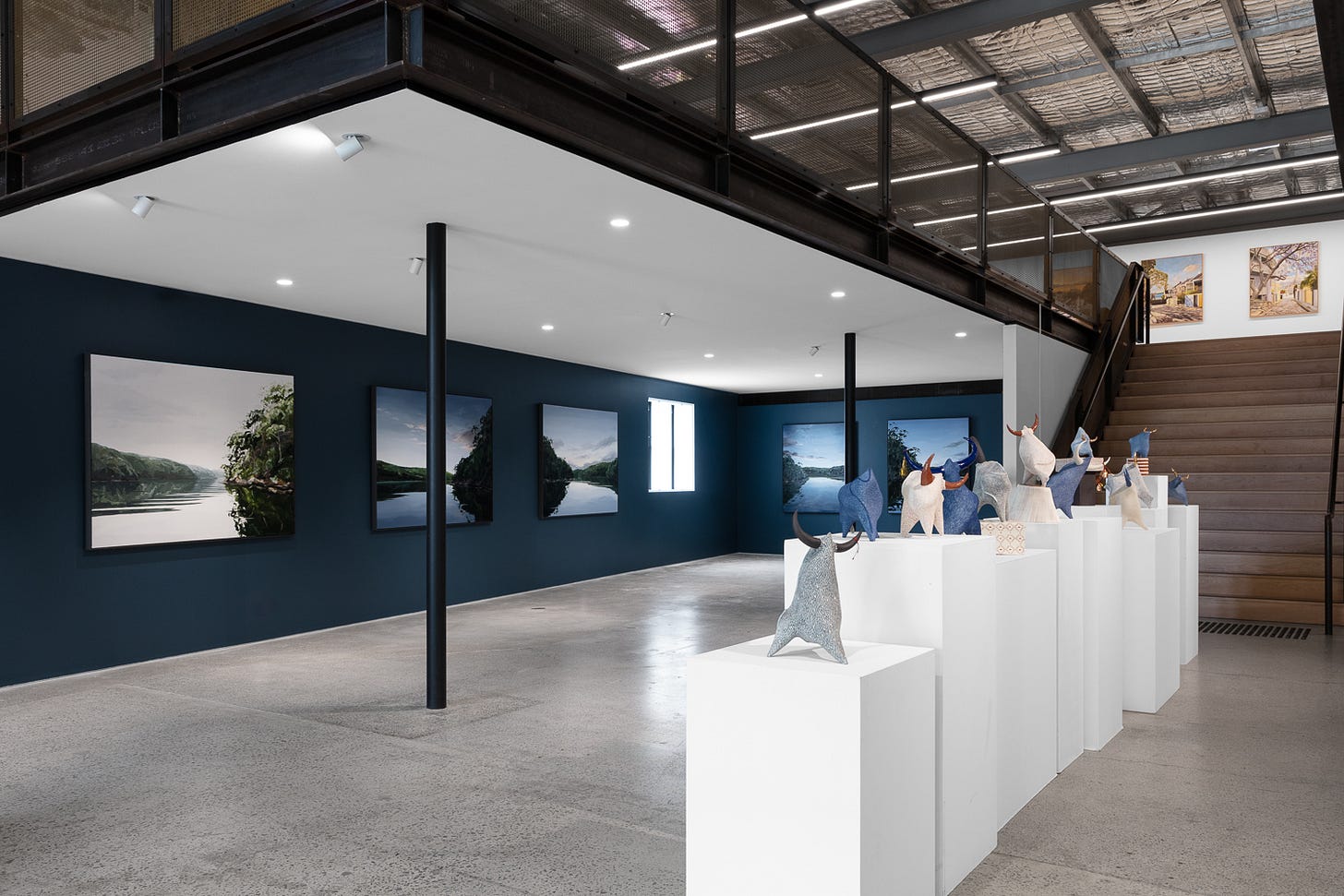
Who do galleries want to represent?
Professionalism is the number one attribute Amber looks for in a represented artist. Respect for deadlines and an ability to communicate are also essential.
“I’m looking for an artist who is consistent in their work, is original, and is open to feedback.”
With early-career artists, consistency means an ability to keep producing the kind of work that first interested Amber: “I might find work that I like, that the artist is unable to produce again, or their visual language is still a little bit changeable”.
Amber starts with a casual arrangement and, if their work sells well and they follow her advice, she may consider them suitable for representation. It is an advantage for those artists to have already developed an audience and demand for their work.
What artists want in return
In return for the 50 per cent commission you pay a gallery that represents you, you should expect:
Ongoing advice and feedback
Marketing
An audience
Growth
Development
Communication
Honesty
Strategy - Play the long game
Building a lifelong art career starts with earning a reputation and nurturing relationships. Amber says some artists need to chill: “Everything’s a series of stepping stones.
“I think a lot of artists expect to go straight to gallery representation with a tier-one gallery. There are steps in between and you need to navigate those carefully and slowly, and learn along the way.
“Each decision will inform the next. Each gallery you show with will inform the next one you might work with. Each body of work you put into the world will inform what happens next. So, everything counts, and I think a little bit of ‘slow-down-and-think’ is beneficial.
“Sometimes artists can be like Labradors. They’re over-excited, jumping all over everyone. I think everyone just needs to take a breather and have a plan and not be so reactive. Have a strategy and goals and pursue them with some structure in mind, rather than just jumping at whatever comes along.”
Keeping it casual. It’s more than just a booty call
The Northern Beaches gallery has 56 artists on its website; only three have formal representation.
Amber’s role within the Michael Reid group is to identify and develop emerging artists, giving them a launchpad into a commercial gallery.
“Sometimes that might just be a one-off solo, a group show, or a small release of work. There might even just be a piece of work in the stock room,” she says.
“But, sometimes for those artists, just having the endorsement of a curator or a gallery of note is what they need to get themselves onto the next step of the ladder and give buyers confidence in their work.
“This can also whet the appetite of another gallery because they feel Michael Reid has taken a risk with this artist, so they are a ‘sure thing’.
“I think that’s some of the benefits of working with a gallery without representation.”

When Amber plans a year ahead, she first allocates exhibition time to artists who have shown before and sold well. Then, she offers an opportunity to new artists who can commit to not showing elsewhere in the same market for the three months either side of the show – mandating a clear six-month window.
“Having two exhibitions going on at two galleries at the same time, or in close proximity to each other, dilutes the audience,” she says.
“If you want to show work whenever you feel like it, you should probably just provide stockroom pieces or goods on consignment. If you want a gallery to work for you – building an audience for your work and giving you maximum exposure, promotion, and marketing – you need to allow that gallery time to do that.
“That’s just a respect thing. If you’re looking to build a relationship at the gallery, I think that is the required etiquette.”
The show is an opportunity to work with a gallery on audience growth, pricing, and promotion. There is also documentation of the work and photography in a professional gallery space.
“There is no obligation on either party to do anything more, other than for the gallery to look after that artist professionally and for the artist to deliver their best work on time.”
Timeline: How Amber plans her year
Amber starts building her schedule for the Northern Beaches gallery in October, working a year in advance. Because she focuses on emerging artists, she makes space for some flexibility.
“I’m in touch with many artists who might not be exhibition-ready but, when there is work that interests me, I might schedule them for an impromptu showing. Sometimes, they don’t want the pressure of a full-blown exhibition and they’d rather provide me with a capsule of eight pieces that they will deliver when they’re ready.”
The other galleries in the group have their own ways of working, depending on the requirements of their markets and the artists with whom they work.
“But for me, it’s juggling the number of artists I’d like to show, keeping variety, and a mix of the dependable, well-known artists with a few more risky showings in between.”
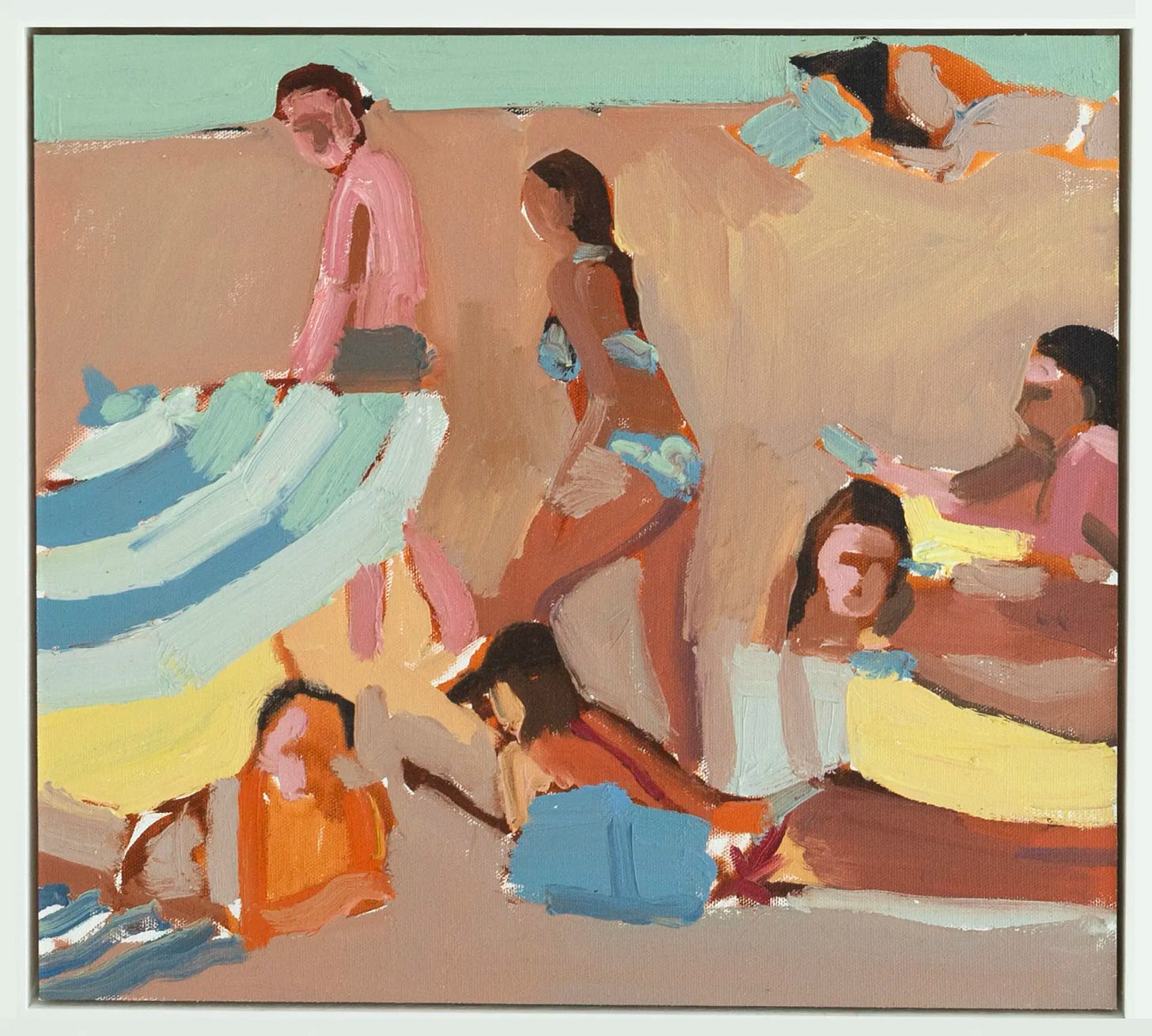
Meet-cute: How to catch her eye
While she doesn’t discourage unsolicited submissions, Amber usually asks these artists to enter the annual National Emerging Art Prize (NEAP): “As the curator of that prize, I look at every single application before they go to the judges.
“That is a nice funnel where I can review a whole lot of submissions at once, because receiving unsolicited submissions is time-consuming and, usually, I’m very busy working on active exhibitions and artist relations and staff management, marketing, documentation, reporting … all that sort of thing.”
Even if an artist is not selected as a finalist in the prize by the judges, Amber may spot someone who appears right for her gallery.
“Often, I find the judges overlook a lot of really strong talent that I will then approach.” In one such case, that artist went on to have a sell-out show and has now exhibited three times with the gallery.
There is also an exhibition for promising artists who missed out: the eponymous ACB Selects, along similar lines to the Salon des Refuses after the Archibald Prize selection.
“[NEAP] is the prize that keeps on giving. That’s why I encourage artists to enter, because winning is not everything. The opportunities are numerous.”
Talent-scouting Amber also monitors Instagram, grad shows and artist-run exhibitions.
“I used to go to places like the Affordable Art Fair and the Other Art Fair, but I’m not thrilled by the quality of artists I see there. I think there are better artists to be found elsewhere.”
Turn-offs:
Sending inquiries to gallerists through DMs.
Dropping into a gallery uninvited to start showing your work.
Approaching a gallerist at another artist’s opening.
Spending more time posting on Instagram than making art
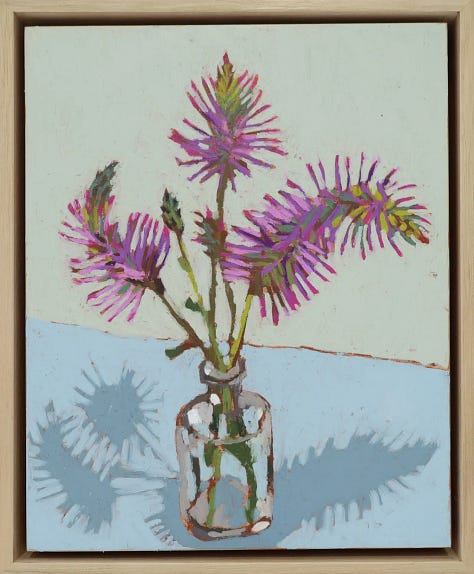
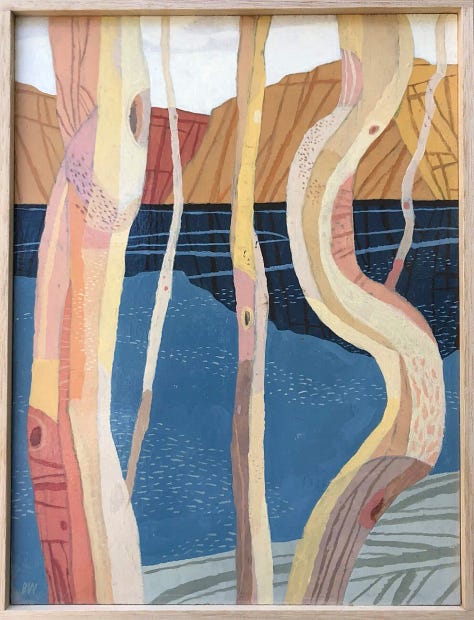

Polygamy: Too many competing commitments
When offered a show, an artist should disclose what other galleries they are working with and potential conflicts of interest.
“It’s not on the artist to decide whether there’s a conflict of interest; that really comes down to the galleries,” says Amber.
“Sometimes I’ve had a show in the works with an emerging artist for 12 months and, just before my exhibition opens, I see they’ve got work available in three other galleries, and they’re doing a sale on their website, and they’ve got new work available on their Instagram.
“It cannibalises all the effort I’ve put into preparing for their show. That’s the easiest way to get on the wrong side of the gallery. So, always be open about other places you’ll be showing. Don’t flood the market with your work. Don’t waste the gallery’s time.
“Focus on doing your best work with that gallery and give them time to do what the gallery does – to build your profile and audience and to educate collectors about your practice. That doesn’t happen overnight or in a week. That is a very time-intensive activity.”
Turn-offs:
Artists saying “yes” to every gallery approach without considering the quality and compatibility of the gallery or its artists.
Lack of timely responses to emails, or hard to contact.
Missing deadlines.
Inability to use everyday technology programs.
Exhibition costs - We all need some happy returns
Rent is the biggest expense for the duration of an exhibition and there are staff wages on top of that.
“I’m working on the show, my gallery manager is working on it, my gallery assistants are working on it,” she says, adding that five gallery staff (part-time and full-time) have a hand in preparing and running the event.
“We are producing catalogues, refining the copy and loading content to the website. A photographer documents all of the work. Harry Roberts, our head of marketing, is making content, social media posts, and creating newsletters to go out to the database.
“There’s an art installer who’s hanging the show. There are room sheets to prepare. Then, at the end of the exhibition, we’ve got the logistics team who are packing works, shuttling them to various buyers.”
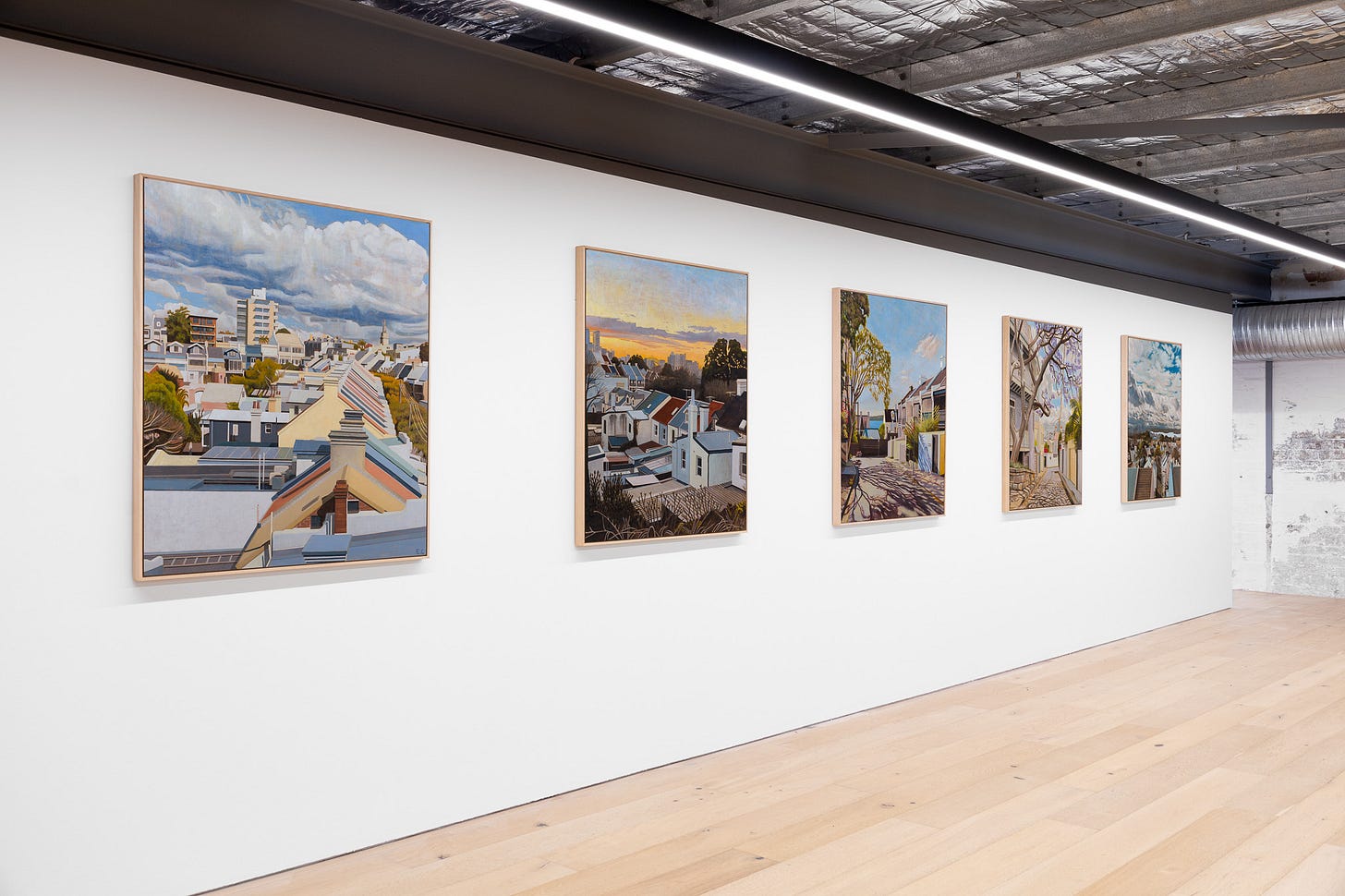
There is also the cost of the back office account people, preparing invoices and chasing payment, and IT support.
“We’re not just putting up an exhibition and hoping for the best. We are reaching out to our collector base and introducing new artists based on their past interests – strategically soft-selling.
“There’s a lot of work behind the scenes and a whole team of people working quite heavily on it.”
“It is expensive and we are a commercial gallery. We are not a museum, so every sale counts.
“We can’t afford a show where half of it is filler. It needs to be all killer.”
“Sometimes, you can have a couple of shows that just don’t sell well, so you need to back it up with a show that performs well.”
Not all galleries put in that kind of effort, so artists must be bold in asking what they get for their 50% commission. Amber says one of the artists she mentors revealed that at a show with another gallery, she delivered 15 works; eight were sold and seven of those were bought by people she knew.
“The gallery gets to keep 50% of that by doing absolutely no work,” says Amber.
“You need to be asking about the promotional activity of the gallery, how they connect with audiences, how they are growing the pipeline, and how they are handling sales with an audience who may not know your work.”
In Summary …
1. Understand Your Goals: Gallery representation isn’t for everyone. Assess your career objectives before pursuing it.
2. Prioritise Professionalism: Meet deadlines, communicate effectively, and respect gallery processes.
3. Build Relationships: Approach galleries with a clear plan and be open to feedback.
4. Leverage Social Media Wisely: Use it as a tool to engage audiences, but don’t let it overshadow your art.
5. Hone Additional Skills: Develop competencies in photography, writing, and other areas to complement your artistic practice.
6. Respect Market Dynamics: Avoid oversaturating the market with your work.
7. Be Patient: Focus on incremental progress and strategic decisions for long-term success.
Disclosure: The author has works showing at the Michael Reid galleries.
Up next …
I intend to take a break from the Business of Art until the new year…. unless a great story drops into my lap and I am unable to help myself. It happens. If I read something interesting, I will draw it to your attention through the Substack Notes function.
I have several story ideas for 2025 and will be looking for subjects to interview. Please tell me if you know anyone suitable for the following topics.
Selling and sending work overseas
How to build a customer database
A conservator - the mistakes we artists make
Taxes on prize winnings (I’ve struck out on getting any response from NAVA and the NSW Minister for the Arts)
Pricing - how to set prices and should we discount?
Why galleries fail
Personal branding
Selling prints
I hope you have a safe and happy holiday season.




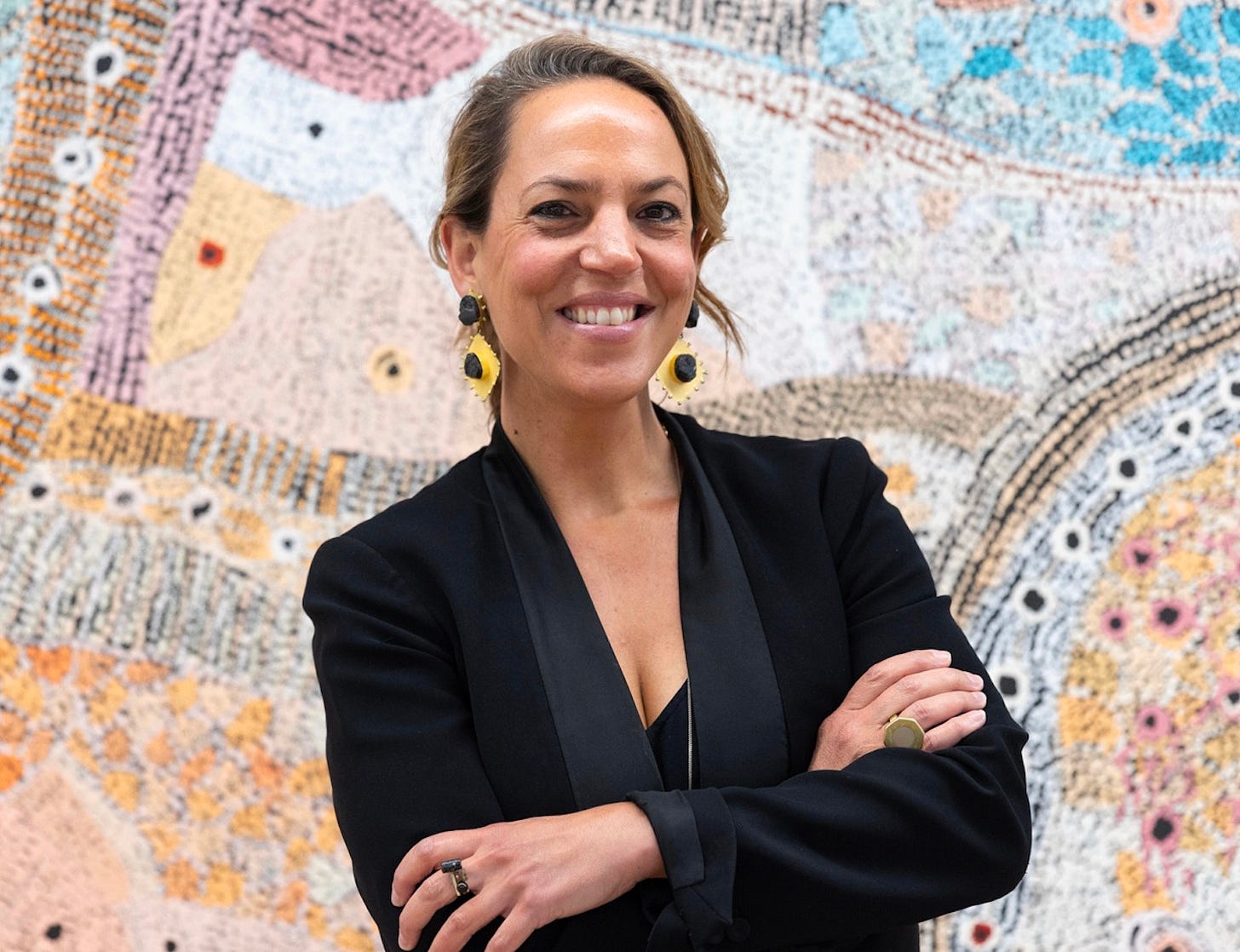

Thank you, Fiona, for sharing Amber’s wonderful advice in your article. It was so well-written and full of practical tips that really resonated with me. I truly appreciate the time and care you put into creating such an insightful and inspiring piece—it was a pleasure to read!
Another excellent article from you, Fiona. This one and the interview with Michael Reid were fascinating to me. I recently caught up with a bunch of fellow artists and we were bemoaning the lack of effort from some galleries who were taking 40 to 50% commission and not doing any promotion and requiring the Artist to produce their own Catalogues. It appeared that the commission was paid solely for the privilege of hanging on the gallery’s wall with very little in return. So to have both Amber and Michael lay out exactly what an artist will get for that 50% commission is encouraging and a relief. There are rights and responsibilities required of both Artist and gallery and it was good to have this so clearly defined. With this level of professionalism, it is no surprise to me that the Michael Reid Galleries are so successful.